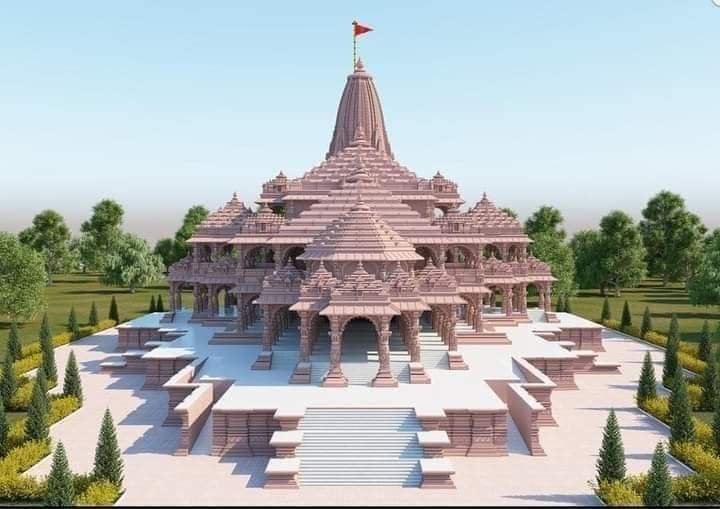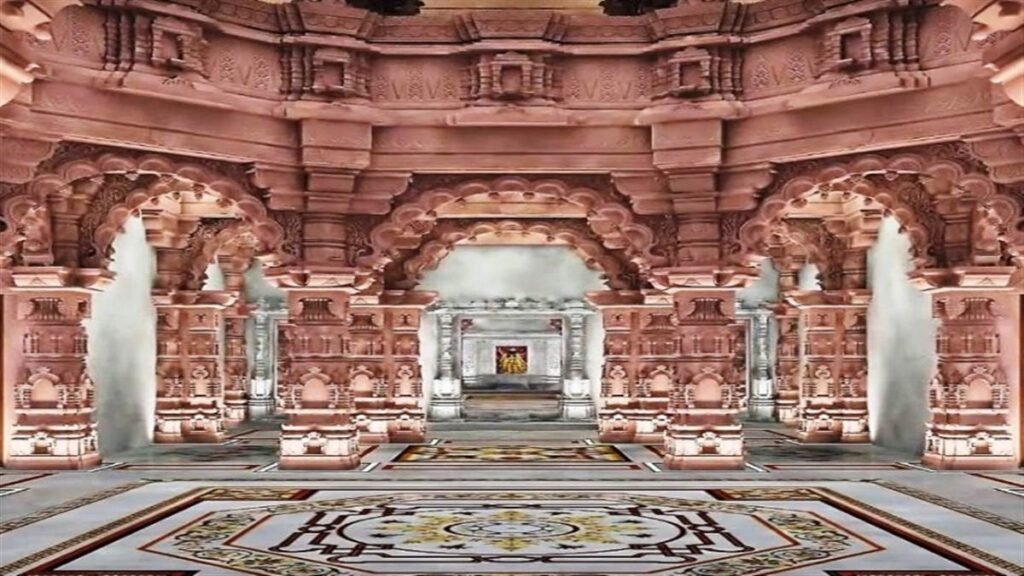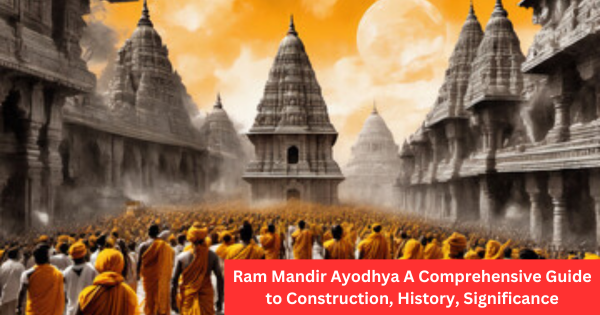Ram Mandir Ayodhya A Comprehensive Guide to Construction, History, Significance, and Opening Date

The impending inauguration of the Ram Mandir Ayodhya marks a momentous occasion for millions of Hindus worldwide. This blog will provide an in-depth overview of the temple, covering its construction details, historical context, cultural significance, and the eagerly awaited opening date.
Construction Journey
The construction of the Ram Mandir commenced in 2020, following the groundbreaking ceremony led by Prime Minister Narendra Modi on August 5. The original design, conceptualized in 1988 by the Sompura family of Ahmedabad, underwent modifications in 2020 to align with Vastu shastra and Shilpa shastras. The Sompuras, renowned for their temple designs spanning 15 generations, have contributed significantly to the architectural vision of the Ram Mandir.
The temple, built over a sprawling 71-acre area, is divided into six parts, including the sanctum sanctorum and five pavilions – Gun Mandap, Rang Mandap, Nritya Mandap, Kirtan Mandap, and Prarthana Mandap. The construction employs carved Rajasthan sandstone sourced from Bansi Paharpur in Bharatpur district. Supervised by experts from the National Institute of Rock Mechanics (NIRM), architect CB Sompura, and implementing agencies such as Larsen & Toubro Ltd (L&T) and Tata Consulting Engineers (TCE), the temple stands as a testament to meticulous craftsmanship.

Architectural Marvel
The Ram Mandir, constructed in the traditional Nagara style, boasts impressive dimensions. Stretching 380 feet in length (east-west), 250 feet in width, and reaching a height of 161 feet, the temple stands tall with 392 pillars and 44 gates. Notably, no iron has been used in the construction, emphasizing adherence to traditional building techniques.
Historical Context and Controversy
The history of the Ram Janmabhoomi site is steeped in controversy and legal battles that spanned over decades. The Supreme Court’s historic verdict in 2019 allocated the 2.77-acre disputed site in Ayodhya to the Hindu side for the construction of the Ram Temple. The ruling concluded a legal dispute that began in 1950, with Hindu groups asserting that the Babri Masjid was built on the site of a pre-existing temple dedicated to Lord Ram. The construction of the temple represents a long-fought victory for the Hindu community.
Significance
The Ayodhya Ram Mandir holds immense significance for Hindus worldwide. It is believed to be the birthplace of Lord Ram, a revered figure in Hindu mythology. The construction of the temple symbolizes a historic and cultural victory for the Hindu community, culminating after decades of efforts and legal battles. The inauguration of the temple is anticipated as a moment of pride and celebration.
Opening Date
The auspicious Pran Pratishtha (consecration) of Lord Ram Lalla is scheduled to take place on January 22, with the ceremony expected between 12:15 pm and 12:45 pm. Following the consecration, the temple will open its doors to devotees from January 23, providing an opportunity for pilgrims and visitors to witness the grandeur of the newly constructed Ram Mandir.
Dignitaries and Attendees
The inauguration ceremony is set to witness the presence of prominent dignitaries, including Prime Minister Narendra Modi, UP CM Yogi Adityanath, RSS chief Mohan Bhagwat, and the president of the temple trust, Mahant Nritya Gopal Das. The guest list extends to notable figures from various fields, including cricket legends Sachin Tendulkar and Virat Kohli, Bollywood superstar Amitabh Bachchan, and industrialists Mukesh Ambani and Gautam Adani.
Conclusion
As the Ram Mandir in Ayodhya prepares for its inauguration, it stands as a symbol of faith, resilience, and cultural heritage. The construction journey, rooted in history and tradition, leads to a moment of celebration for Hindus worldwide. The opening of the temple’s doors on January 23 will mark a significant chapter in the collective consciousness, representing not just the physical manifestation of a grand structure but a spiritual and cultural triumph for generations to come.
FAQ
How much did the construction of the Ram Mandir Ayodhya cost?
As the Ram Mandir in Ayodhya prepares for its inauguration, it stands as a symbol of faith, resilience, and cultural heritage. The construction journey, rooted in history and tradition, leads to a moment of celebration for Hindus worldwide. The opening of the temple’s doors on January 23 will mark a significant chapter in the collective consciousness, representing not just the physical manifestation of a grand structure but a spiritual and cultural triumph for generations to come.
What are the dimensions of the Ram Mandir Ayodhya?
The Ram Mandir Ayodhya is an architectural marvel, with dimensions of 380 feet in length (east-west), 250 feet in width, and a towering height of 161 feet.
When is the anticipated completion date for the construction of the Ayodhya Ram Mandir?
The final construction of the Ram Mandir Ayodhya is expected to be completed by December 2024.
Keep reading here: Discover the Magic of Lakshadweep Tourism
When will the Ram Mandir Ayodhya be open for public visitation?
The Ram Mandir is scheduled to open its doors to the public on January 23, a day after the Pran Pratishtha ceremony on January 22.
How can one contribute or donate to the construction of the Ram Mandir Ayodhya?
Contributions to the construction of the Ram Mandir can be made through various means, including cheques, fund transfers, or UPI. The bank details for donations are available on the official Ram Mandir Trust website: srjbtkshetra.org/donation-options.




